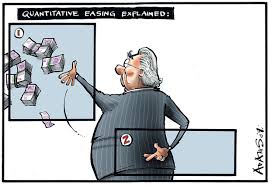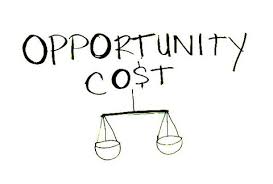The European Central Bank recently pushed the button on a €1.1trillion bond purchase programme for the euro zone. The European Central Bank said that it would buy €60 billion of public and private securities a month from March, until September 2016.So, what does this quantitative erasing means and from where do the central banks get the credit to purchase these assets?
Quantitative Easing (QE) is a expansionary monetary policy in which central bank purchases assets, typically government bonds, from banks and other financial institutions. To carry out QE central banks create money by buying securities with electronic cash that did not exist before. It has the same effect as printing money. The purpose of QE is to lower interest rates and spur economic growth.
When the central bank adds credit, the banks have more than they need in reserves. They now have more to lend to other banks. As banks try to unload their extra reserves, they drop the interest rates they charge.Lower interest rates allow banks to lend more loans. Bank loans stimulate demand by giving businesses cheap loans to expand, and households more credit to buy things with. When the economy has begun to recover, the central bank then sells its assets, and sterilises the cash it receives from the sales. So overall, no additional money remains in the system.
The US Federal Reserve, the Bank of Japan and the Bank of England are three major central banks that have spent trillions on quantitative easing. However, the most successful QE effort was undertaken by the U.S. Federal Reserve. As a result, its balance sheet more than quadrupled, from $2.825 trillion in 2008 to $4.482 trillion in 2014. That makes the U.S. QE the most massive economic stimulus program in world history.





6 Comments. Leave new
Quantitative Easing impacts the whole world due to intermingled trade relations.
Very well written.. Nice article..
Got something new to read 😀
nice 🙂
Impressive….well written!
informative and well articulated.